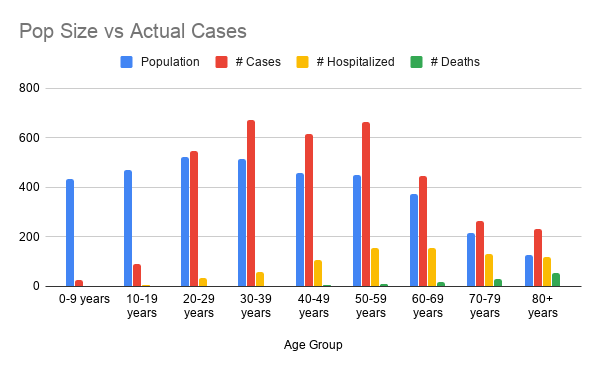The opposite is happening, most hospitals have an excess of beds and are losing money and laying people off...
We are experiencing an epidemic that bizarrely — and in part because of the choices of policymakers — has created a surfeit of hospital beds and an excess of doctors and nurses.
...
One reason that we didn’t want hospitals to get overrun by COVID-19 patients is that we didn’t want to crowd out everyone else needing care. But, as a deliberate choice, we’ve ended up crowding out many people needing care — even where COVID-19 surges haven’t happened and probably never will.
Drastic measures were called for when the coronavirus hit our shores and began to spread out of control, especially in urban areas particularly susceptible to the pandemic. It is understandable that we wanted hospitals to prepare for the worst, and to preserve and muster equipment necessary to safely care for infected people. Hospitals themselves can become a vector for spread of COVID-19, so keeping away people who didn’t absolutely need to show up was a reasonable impulse. But this is a case where the cure may be really worse than the disease — or at least has created its own crisis.
https://www.nationalreview.com/2020...ome-hospitals-overwhelmed-many-underutilized/
Hospitals have taken huge revenue losses as they postpone elective surgeries and other routine care so they can make more staff and space available for the Covid-19 response. Some hospitals expect to lose half their income, and the top industry trade groups have warned that hundreds of hospitals could close after this crisis.
https://www.vox.com/2020/4/8/21213995/coronavirus-us-layoffs-furloughs-hospitals
As some anecdotal evidence my wife works at one of the two largest hospitals in Columbus, OH in the PACU. Columbus is obviously not dense compared to NYC or other major metros, but it is not rural America either. It is probably the definition of "average America" or close to it.
They shut down all elective surgeries and basically everything else in order to treat COVID. They also turned the convention center here into a field hospital. My wife has said that they had two primary covid units at the hospital and one of them got more than half full but that was it.
The hospital elected to pay all employees through the pandemic even if they didn't work. Many nurses and staff sat at home and did nothing. Now the hospital is ramping back up and changing their tune to "we have to make money" and are setting more restrictive clock in/clock out guidelines. Nurses no longer get OT if they work more than 40 hours. Call in pay may have been cut too, I can't remember. The point is that the hospitals prepared to hemorrhage money for something they never happened. Since services are only starting to get ramped back up layoffs are an obvious next step if the revenue doesn't show back up. The hospital has been altruistic financially but it will only last so long.
Occupancy at her hospital is virtually empty because they shut everything down for the covid surge that never happened.
I was in favor of shutdowns when they happened in March. Now I am skeptical. The messaging was "the wave is coming". Well it seems more and more likely that there has been community spread for a while. We shut down here in Columbus in late March. Shelter in place was 3/26 I believe, but there were already covid cases in the state by then and restaurants, bars, large gatherings were banned 10 days prior to shelter in place.
What I am getting at is I keep hearing that these shelter in place and social distancing orders have stopped the spread. Maybe. But with increasing evidence of community spread before any of this went into effect I am skeptical how much they have helped. With community spread likely already out there the damage would have been done.....and I am not convinced most are following the guidelines as well as they should have anyways...just based on the observations I have seen when I have had to be out.
I don't have the answers, but I remain skeptical on how unprepared our hospitals truly would have been without any of this. We will never know and some will say better safe than sorry. I am on the fence though and look at the 30 million unemployed and industries that have been completely destroyed. The fact that some healthcare workers are at risk now of losing jobs has me scratching my head even more.

